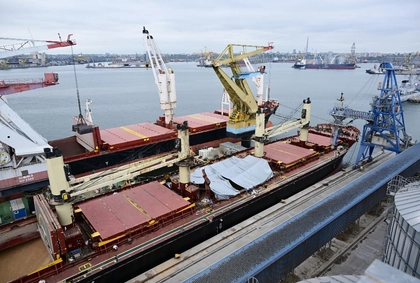The National Bank of Ukraine concludes the financial sector is still anxious, with Russian strikes on energy infrastructure undermining another effort to sustain perfect resiliency, The Financial Stability Report of The National Bank of Ukraine concludes.
The Index of Financial Stress, a tool for Ukraine’s central bank to assess the situation in the financial sector, remains below pre-invasion levels.
JOIN US ON TELEGRAM
Follow our coverage of the war on the @Kyivpost_official.
The biggest contribution lies in the rising of Ukraine’s Eurobonds yield – that means the existing ones are losing their value.
It is balanced with the fall of interest rates for bonds inside the country, still making the securities attractive for investment.
The Financial Stress Index that indicates the level of anxiety in Ukraine’s financial sector. Source: NBU
This motivates banks to increase the volume of government bonds in their assets.
But banks also increased their business loan volumes by 12 percent year-over-a-year in April. Business loan interest rates in 2023 have fallen 4 percentage points to 16 percent.
Business is also shifting from concessional lending through “5-7-9 percent” loans to market credits.

Central Bank Raises Key Rate to Tame Inflation Rise
Net corporate loans. Source and estimates: the National Bank of Ukraine
But what really is driving lending is peer-to-peer lending.
The lending to spending ratio among Ukrainians is close to its historical maximum, the National Bank concluded. Key competitive advantages to win clients in the niche are not the interest rates, but the speed of decision-making and easy-to-use smartphone apps.
Mortgage, on the other hand, is only driven by state-supported concessional lending program “yeOseya” that offers mortgage loans at 3 and 7 percent.
However, the central bank noted that the program’s manager, state company Ukfinzhytlo, is currently having less capital inflows that allowed to pour cash to compensate market interests to banks.
It is also too expensive for banks to compete with yeOselya with market products. Meanwhile, developers are only finishing construction of existing projects and are tempted to start new ones due to war uncertainty. NBU warns it may cause a deficit of new housing in the future.
As NBU assesses macroeconomic risks, the institution notes new agreements on financial aid that help Ukraine keep inflows persistent for 2024, especially $50 billion loan backed with Russian assets agreed by G7.
Other aid from partners is allowing the central bank to mitigate fluctuations of exchange rate, as government is mobilizing resources inside the country.
Source: The National Bank on Ukraine based on the Ministry of Finance estimates.
This makes Ukraine’s economy resilient to the shocks of war, but Russia keeps creating new extreme circumstances with its missile attacks.
Business is lacking professionals because some migrated from the country, others went serving in the army.
This deficit pulls wages up – average salary in the first quarter of 2024 increased by 22.5 percent compared to last year, NBU estimated.
In addition to the electricity deficit and high intensity of Russia’s war against Ukraine, these factors curb GDP growth. The central bank’s GDP forecast decreased to 3 percent rather than previously forecasted 3.6 percent for 2024.
You can also highlight the text and press Ctrl + Enter









